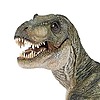HOME | DD
 GonzaloTCDA — Not-so-old drawings - Genericness
GonzaloTCDA — Not-so-old drawings - Genericness

#reptile #unicorn #wyvern #chinesedragon #pencildrawing #indricotherium #speculativeevolution #speculativebiology #speculativezoology
Published: 2024-01-31 12:14:03 +0000 UTC; Views: 1498; Favourites: 21; Downloads: 1
Redirect to original
Description
A drawing I most probably made during December 2020, while the cooler creatures of above are from this Monday.The older drawing depicts shitty crossover fanart of two Minecraft mods: the well-known Erebus mod, and the lesser-known Welcome to the Jungle mod:
www.curseforge.com/minecraft/m…
www.curseforge.com/minecraft/m…
Above the crappy fanart, spec evo genericness in all of its glory. An unicorn that is another skinny rhinoceros, a hippocampus that is just an oversized seahorse, a therapsid Chinese dragon stolen from Iguanodon't, and a canid chupacabra and varanid-related wyvern stolen from Hyrotrioskjan :
www.tumblr.com/iguanodont/1346…
iguanodont.tumblr.com/post/167…
www.deviantart.com/hyrotrioskj…
www.deviantart.com/hyrotrioskj…
The melanoceronte (''melanoceros'') is a medium-sized hyracodontid, the same family as Paraceratherium and Sauropus. These melanos live in savannahs in large herds of up to 100 individuals and feed on low-growing bushes, and both sexes use their thick horns to unearth fleshier roots. Instead of swordfighting with their larger horns, males use them to hit their necks each other life giraffes do. These horns were also proven to be emergency fat reserves, as melanos that live in more arid and lifeless biomes use enzymes that soften the solid fat horn so it can be reabsorbed in the body, and therefore, herds that live in these biomes prefer running rather than breaking their horns in combat.
The pesadilla blanca (''whitemare'') is a large-sized teratosaur belonging to the Rapaxodylia order, like coral wyverns, but from the Umbradylidae family. Whitemares are a true oddity among all rapaxodiles or wyverns, as they usually wear flashy colours, usually black contrasted with red-yellow or green-blue patterns or viceversa, while this species is entirely white with only a few black stripes. Being amongst the largest rapaxodiles, whitemares are diurnal predators of other wyverns, clipping their membranous wings with their formidable scissor-shaped beaks in long pursuits. Like Komodo dragons, females abandon their eggs inmediately as they will show no resistance to the cannibalistic urges that keep the whitemare population balanced, and only one or two hatchlings will survive into adulthood. As wyverns living in hot jungle biomes and having white skin that overheats them and makes them lose one third of their bodyweight a day, whitemares have to eat at least ten wyverns everyday. After all, nightmarish creatures are no exception for life to be nightmarish for them.
The shŭlóng (meaning ''rat dragon'' in Chinese) is a member of the Dracomuridae family, from the infraorder Rivosoriciomorpha (''shape of river shrew''), from the Scandentia order, the same order as tree shrews or tupaias. A wonder of evolution, the origin of these 3-4 meter-long beasts is not natural: there is evidence of their ancestors being artificially selected for their shiny reddish-golden fur, and because the fruits that make a rough 90% of their diet (complementing it with soft river weeds and crustaceans) are also artificially selected for the same people who engineered them. Almost completely feral, shŭlóngs are almost 100% aquatic and they cannot support their weight in dry land, rendering them unable to access freshly matured fruit from the taller trees; this weight and unability is another vestige of their selectors, on whom they depended entirely to feed. When their selectors were gone, the vast majority of shŭlóngs died, and those who survived relied on the scarce dropped fruit in the shore or floating over the river. The descendants of the survivors became ecosystem engineers, slowly excavating new creeks with their elongated snouts near the fruit-bearing trees so the fruit can obligatedly drop itself to the streaming waters. They also learned to artificially select trees themselves, only planting the seeds of the trees which have bigger and fleshier trees, and those whose branches are lower and nearer to the surface, so shŭlóngs can also access freshly-matured fruit with short leaps. Unlike their parents, young shŭlóngs can walk in dry land, which is beneficial for the artificial selection of trees, as they have access to dropped fruit in the ground, gorging on them, sending remittances to adults, plant the desired seeds and crush the seeds of those whose features they reject with their molars. Shŭlóngs are long-lived, of pacific nature, of short reproduction rate, have no predators, and all kinds of animals come to them for protection, and though wild, they retain their kindness to sapient people. This, accompanied with their ability to decide if the lands around them shall remain dry or be flooded, is what made them earn their name.

















